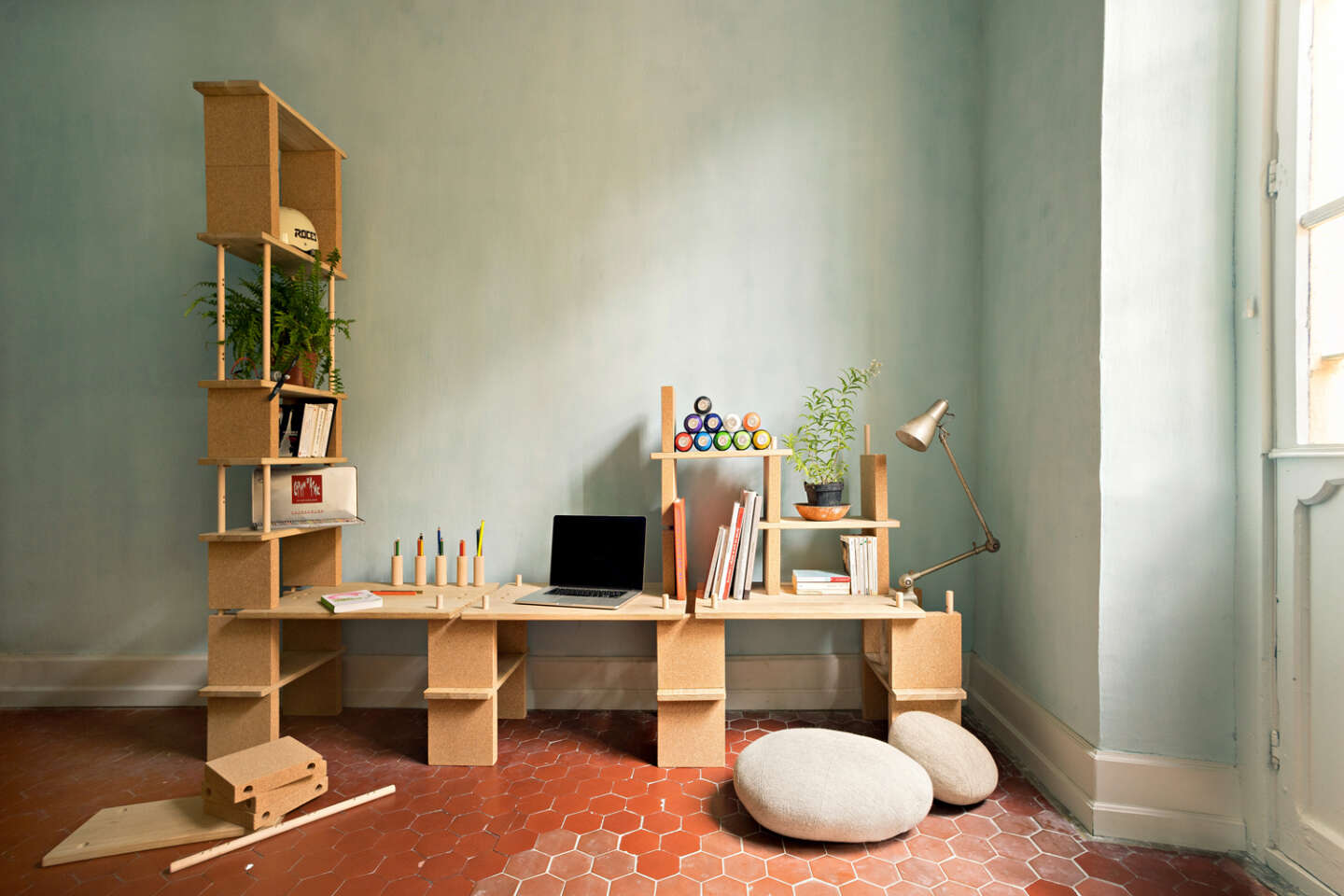What if furniture was also a space to live in? This is the thinking that guided the duo Makkink & Bey when they imagined, about twenty years ago, an armchair for the offices of a Dutch insurance company capable of providing some privacy in the heart of open spaces. Thus was born the EarChair (“ear chair”) – produced by the office furniture specialist Prooff – whose top of the back has two side flaps.
“Add another Armchair and suddenly you have an almost enclosed space. In the middle of a crowd, you can privately chat, call. The more Cushions you add, the bigger your room in the room becomes,” claimed the designers when it was put on the market.
This model is in the book furniture, by Anna Yudina (Thames & Hudson, 2015, untranslated), which lists two hundred examples of recent creations designed by studios around the world and which demonstrate the new wave of furniture inspired by architecture. “This trend is not a style but an approach to design. It underlines the idea that the latter can be a question of structure and unification of functions like Muller Van Severen’s installations”, explains author Anna Yudina.

History is punctuated by these hybrid projects, such as the Mini Kitchen by Joe Cesare Colombo, in 1963, or the traditional Breton closed bed, revisited in 2000 by the Bouroullec brothers. Recently, the phenomenon has grown in the domestic world. Guillaume Delvigne has just added a library desk to the Intervalle range, with architectural lines, by Ligne Roset.
For his part, Adrien Rovero imagined Tadamis, a huge wooden base with raised ends and covered with tatami, designed as an island to rest on. And the Brazilian collective F.Studio Arquitetura designed the Plana library, using building materials and taking the lines of a building. Finally, The Kitchen on the terrace, an installation by Matali Crasset that offers a micro-architecture of levels leading to a table at which to share a meal, is on display until December at the FRAC Grand Large in Dunkirk.

The best example remains the Geometric Life collection, by Stéphanie Marin, and her Play Yet system, a kit consisting of cork blocks, oak boards and beech uprights, which helps to structure the space. “With this system, reports the designer, it is possible to build on different scales, create a room within a room, a cabin, or rely on existing architecture to extend it, for example, with a bookcase leaning on a fireplace mantle. A very simple set to build, a kind of construction game that even a child can do. »

